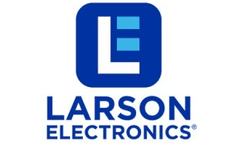Solar Cell System Articles & Analysis
12 articles found
Formamidinium Iodide Perovskite, also known as FAI perovskite, is an exciting material that has emerged as a star in the field of photovoltaics. It is a type of perovskite semiconductor, which has promising properties that make it an excellent material for solar cells. Introduction of Formamidinium Iodide Perovskite FAI perovskite is characterized by its organic cation formamidinium (FA). This ...
Solar thermal power is a technology that converts light energy into heat energy and then generates electricity by doing work through a conventional thermal cycle.Solar thermal power is a technology that converts light energy into heat energy and then generates electricity by doing work through a conventional thermal cycle.Solar thermal power produces the same alternating current as conventional ...
Now that solar energy has a larger share in our energy supply, it is becoming more important that solar panels are reliable and behave predictable. To be able to predict when solar panels will fail, insight into the failure mechanism is essential. This knowledge is used to improve the quality and longevity. Scientists at TNO Energy Transition and Solliance Solar Research have developed a ...
You’re probably aware that Greenshine is a company that specializes in solar lighting. You’re also probably aware that solar lighting uses solar panels. If you’re not aware of these facts, welcome to our site! For the remaining crowd, or for those who we have piqued interest, we’ve developed a comprehensive guide of solar technology and pinpointed the ones that are best ...
Inkjet Perovskite solar cells may help shape the future of energy production by lowering costs, and transparency Solar panels used to be costly and time-consuming to produce—and quite expensive on the consumer side. New technologies have driven costs as well as production time down, to the benefit of consumers. See what's new with solar panels and where the solar cell technology is going. ...
But how do we use this change and how will it change our lives? What are Solar Cells? How Do They Work? Solar systems convert the enormous, inexhaustible power of the sun into electricity. ...
Second Law of Thermodynamics The main culprit responsible for the inefficiency of solar cells lies in the second law of thermodynamics. Carnot’s theorem, which was developed by Nicolas Léonard Sadi Carnot in 1824, suggests that this law is the reason why it impossible to create a fully efficient solar cell. ...
Second Law of Thermodynamics The main culprit responsible for the inefficiency of solar cells lies in the second law of thermodynamics. Carnot’s theorem, which was developed by Nicolas Léonard Sadi Carnot in 1824, suggests that this law is the reason why it impossible to create a fully efficient solar cell. ...
The professional companies of repute have experienced engineers to handle every aspect of high quality solar power systems. The solar panel system distributing companies can provide uncompromising services over the life of the system. ...
The EPFL researchers have managed to merge antennas and solar cells in a mixed device that promises unprecedented efficiency. It is a first step towards the development of more compact and lighter satellites, but also to the improvement of mobile communication systems used in case of disaster. Traditionally, telecommunication antennas and ...
Breakthrough photovoltaic concentrators producing ultra high efficiencies have been developed by Solar Systems (an Australian company) and deployed in a number of projects, on a relatively small scale in collaboration with the Australian Government. Beginning with an AUD$0.424 Billion, 154MW phase in Australia, this project aim to deploy at least 1GW of power ...
Photovoltaics, which directly convert sunlight into electricity, include both traditional, polysilicon-based solar cell technologies and new thin-film technologies. Thin-film manufacturing involves depositing extremely thin layers of photosensitive materials on glass, metal, or plastics. ...









